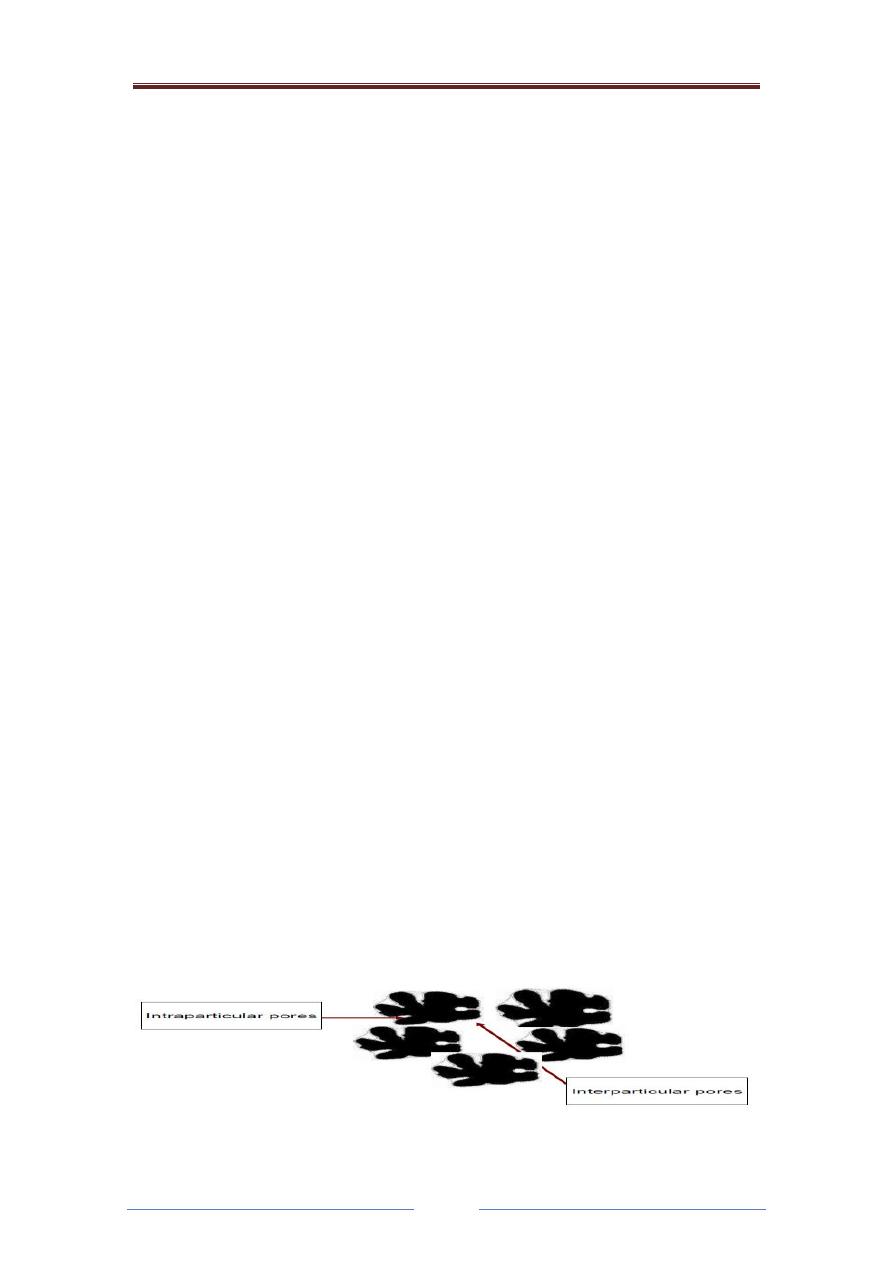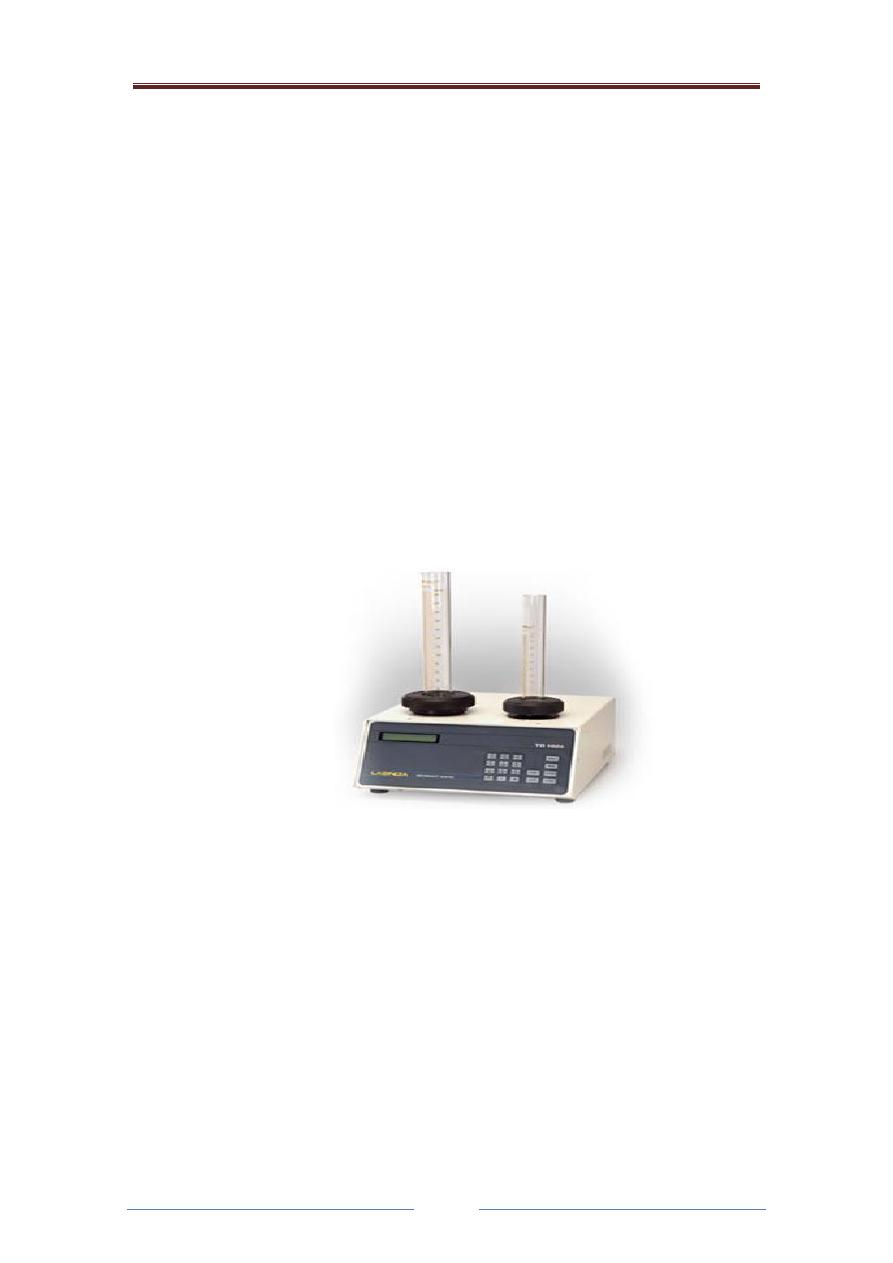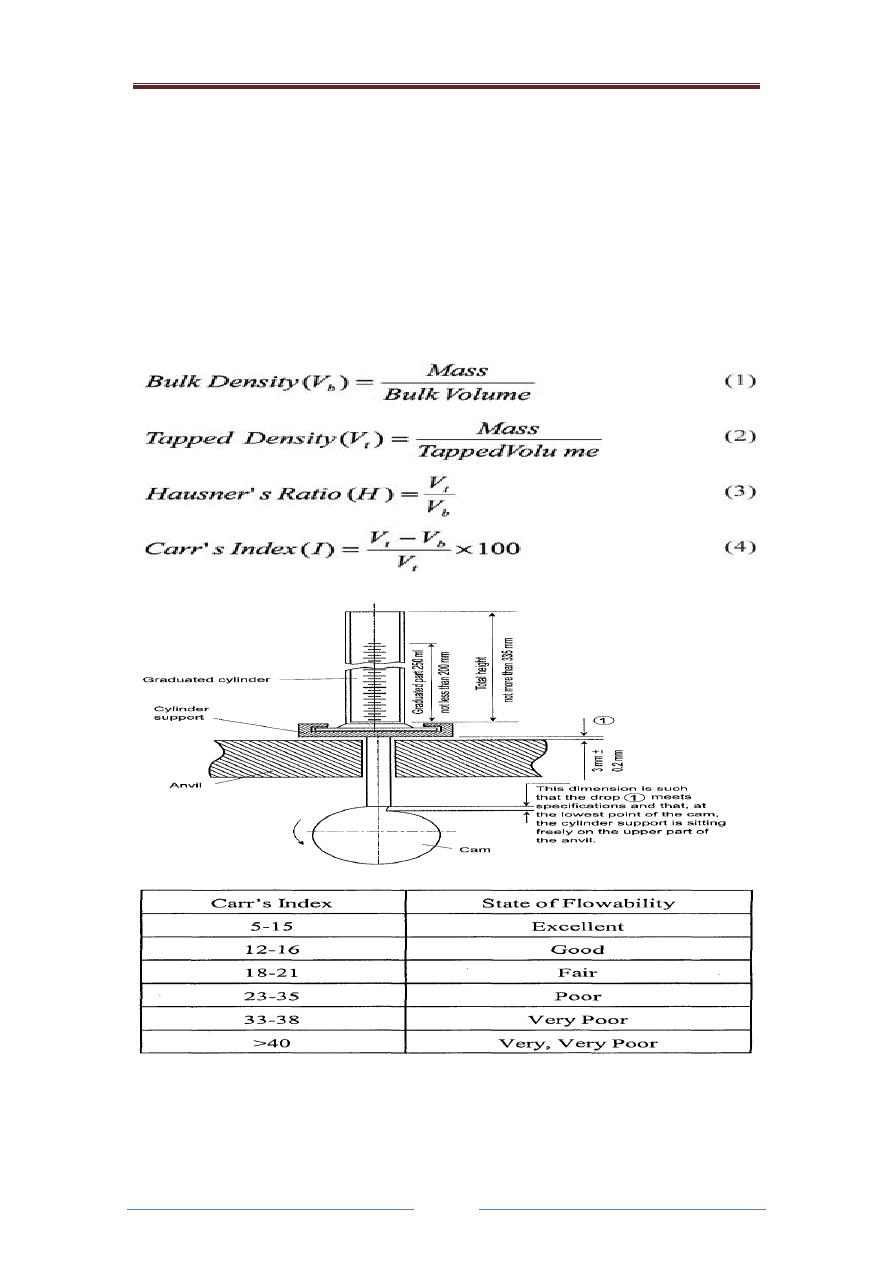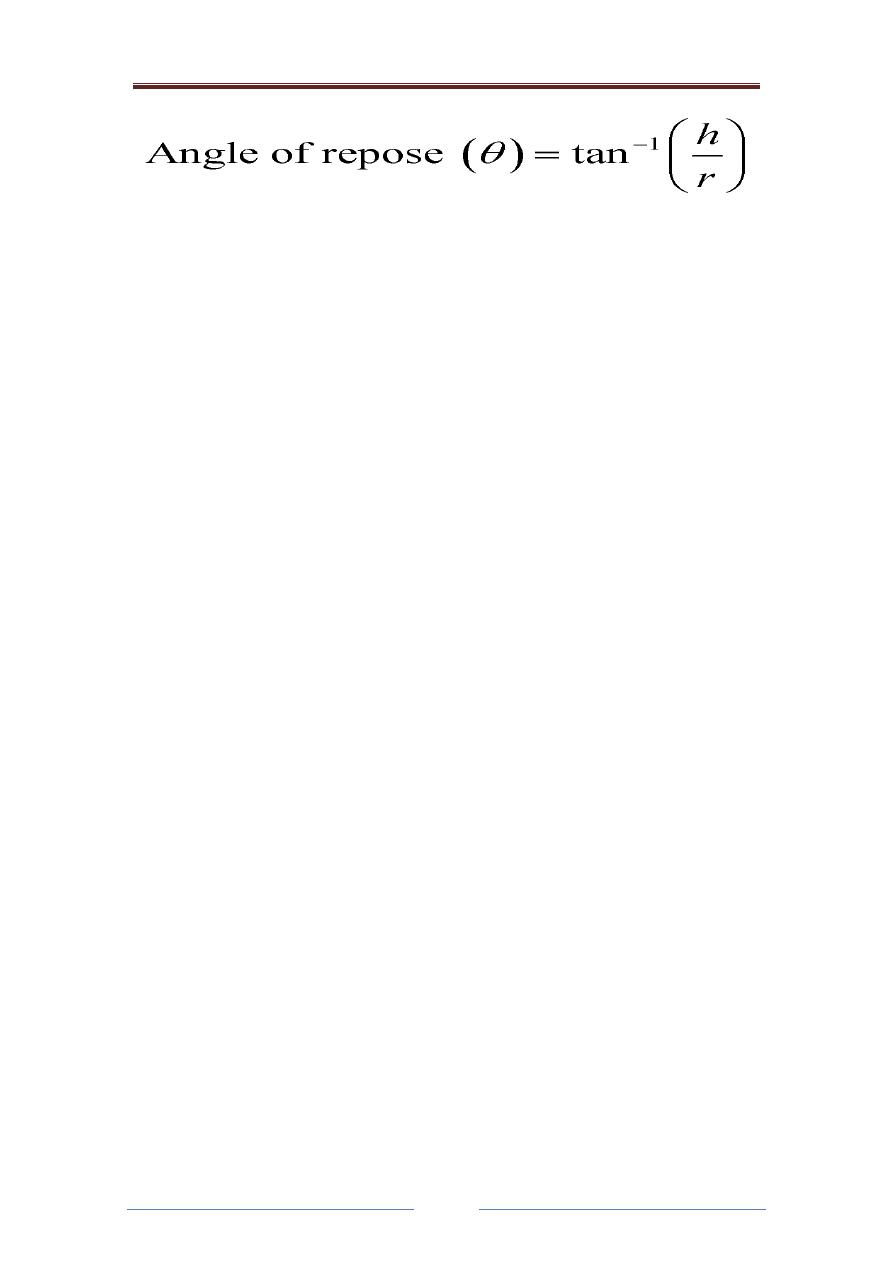
Pharmaceutical industry lab Powder flow
Page 1
Lab 3
Powder flow
The largest use of powders pharmaceutically is to produce tablets and
capsules. Together with mixing and compression properties, the
flowability of a powder is of critical importance in the production of
pharmaceutical dosage forms. Some of the reasons for producing free-
flowing pharmaceutical powders include:
1. uniform feed from bulk storage containers or hoppers into the feed
mechanisms of tableting or capsule-filling equipment, allowing
uniform particle packing and a constant volume-to-mass ratio which
maintains tablet weight uniformity;
2. reproducible filling of tablet dies and capsule dosators, which
improves weight uniformity and allows tablets to be produced with
more consistent physicomechanical properties;
3. uneven powder flow can result in excess entrapped air within
powders, which in some high-speed tableting conditions may promote
capping or lamination;
4. uneven powder flow can result from excess fine particles in a powder,
which increase particle-die-wall friction, causing lubrication problems,
and increase dust contamination risks during powder transfer.
Adhesion and cohesion
The presence of molecular forces produces a tendency for solid
particles to stick to themselves and to other surfaces. Adhesion and
cohesion can be considered as two aspects of the same phenomenon.
Adhesive and cohesive forces acting between particles in a powder bed
are composed mainly from short-range non-specific van der Waals forces
which increase as particle size decreases and vary with changes in
relative humidity.
Densities of particles:
A- true density

Pharmaceutical industry lab Powder flow
Page 2
Lab 3
The true density, or absolute density, of a sample excludes the volume of
the pores and voids within the sample.
B- bulk density
The bulk density of a powder is the ratio of the mass of an untapped
powder sample and its volume including the contribution of the
interparticulate void volume. Hence, the bulk density depends on both the
density of powder particles and the spatial arrangement of particles in the
powder bed.
The bulking properties of a powder are dependent upon the preparation,
treatment and storage of the sample, i.e. how it was handled. The particles
can be packed to have a range of bulk densities and, moreover, the
slightest disturbance of the powder bed may result in a changed bulk
density.
Thus, the bulk density of a powder is often very difficult to measure
with good reproducibility and, in reporting the results, it is essential to
specify how the determination was made.
The bulk density of a powder is determined by measuring the volume
of a known mass of powder sample, that may have been passed through a
screen, into a graduated cylinder
C-Tapped density
The tapped density is an increased bulk density attained after
mechanically tapping a container containing the powder sample. The
tapped density is obtained by mechanically tapping a graduated
measuring cylinder or vessel containing the powder sample. After
observing the initial powder volume or mass, the measuring cylinder or
vessel is mechanically tapped, and volume or mass readings are taken
until little further volume or mass change is observed. The mechanical
tapping is achieved by raising the cylinder or vessel and allowing it to
drop, under its own mass. Devices that rotate the cylinder or vessel during

Pharmaceutical industry lab Powder flow
Page 3
Lab 3
tapping may be preferred to minimize any possible separation of the mass
during tapping down.
Flowability can be estimated from the bulk density of the powder as
well. a typical tapped density measuring device. After the powder
sample is tapped by the rotating cam, the bulk density of the powder
increases from ρmin ( bulk density) to ρmax (tapped bulk density). The
percentage compressibility (Carr’s Index) can be calculated by the
following equation:
The angle of repose (α)
has been widely used to describe powder flowability. For an
accumulation of static powders, the angle between the free surface of the

Pharmaceutical industry lab Powder flow
Page 4
Lab 3
powder body and the horizontal plane is called the angle of repose. For
instance, when adding additional powder to a powder mound, the angle
between the side and the bottom surface reach a constant value, due to a
balance between gravity and powder friction . A smaller angle of repose
indicates smaller frictional forces and greater flowability. For a free-
flowing powder, the angle of repose is equal to or less than 30°; powders
with an angle of repose equal to or less than 40° have satisfactory
flowability; and, when the angle of repose is greater than 40°, the powder
does not flow freely. Different magnitudes for flowability data may be
obtained, depending on which method is chosen. In addition, the
reproducibility is typically poor for this method, so angle of repose is not
always considered a perfect representation for powder flowability.

Pharmaceutical industry lab Powder flow
Page 5
Lab 3
Procedure
1. Weight 100 gm of sugar and 100 gm of glucose powder
2. Use cylinder and measure the
Bulk density
Tap density
3. Calculate carr's index and hausner ratio
4. Measure the angle of repose using fennel
